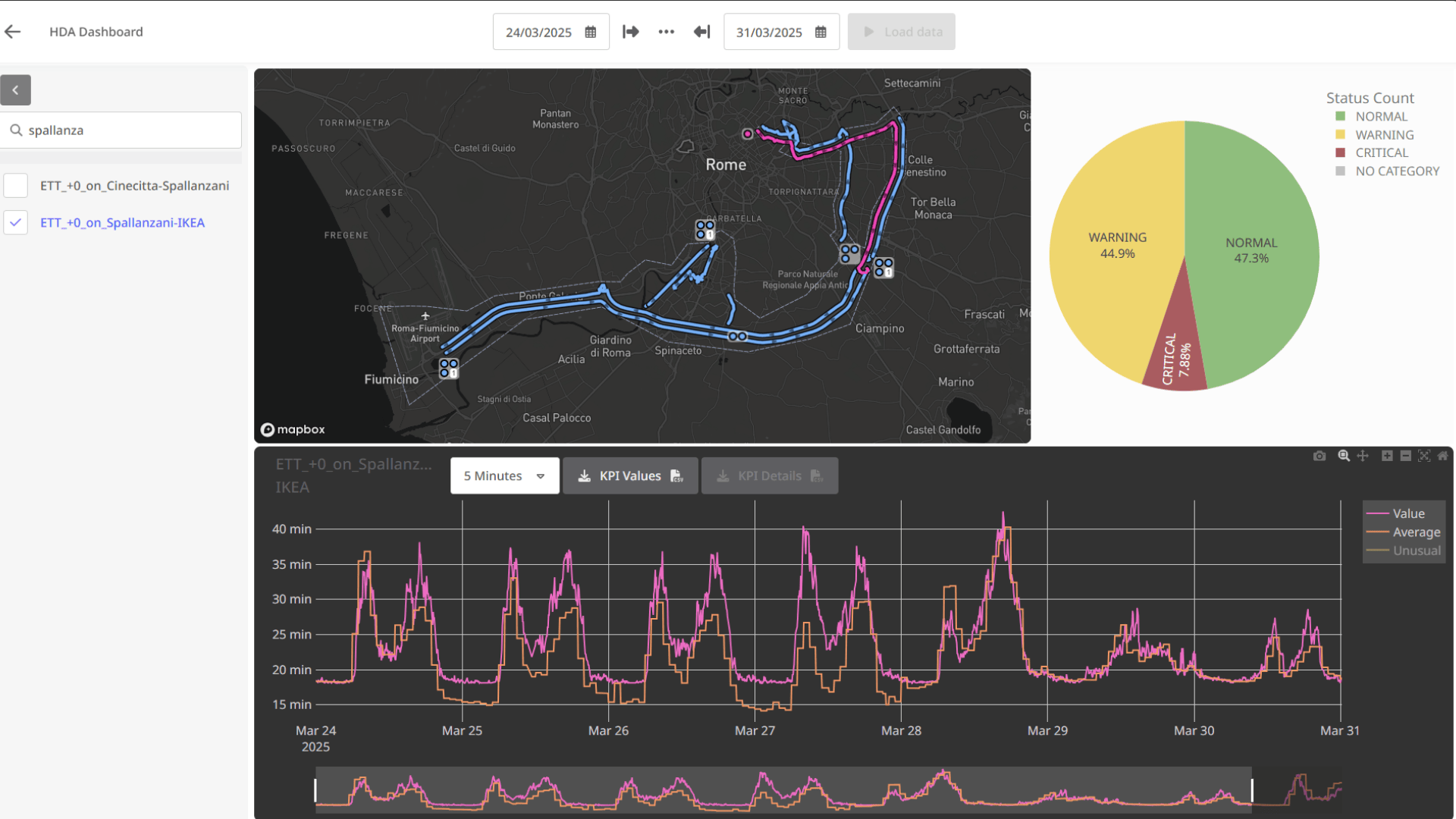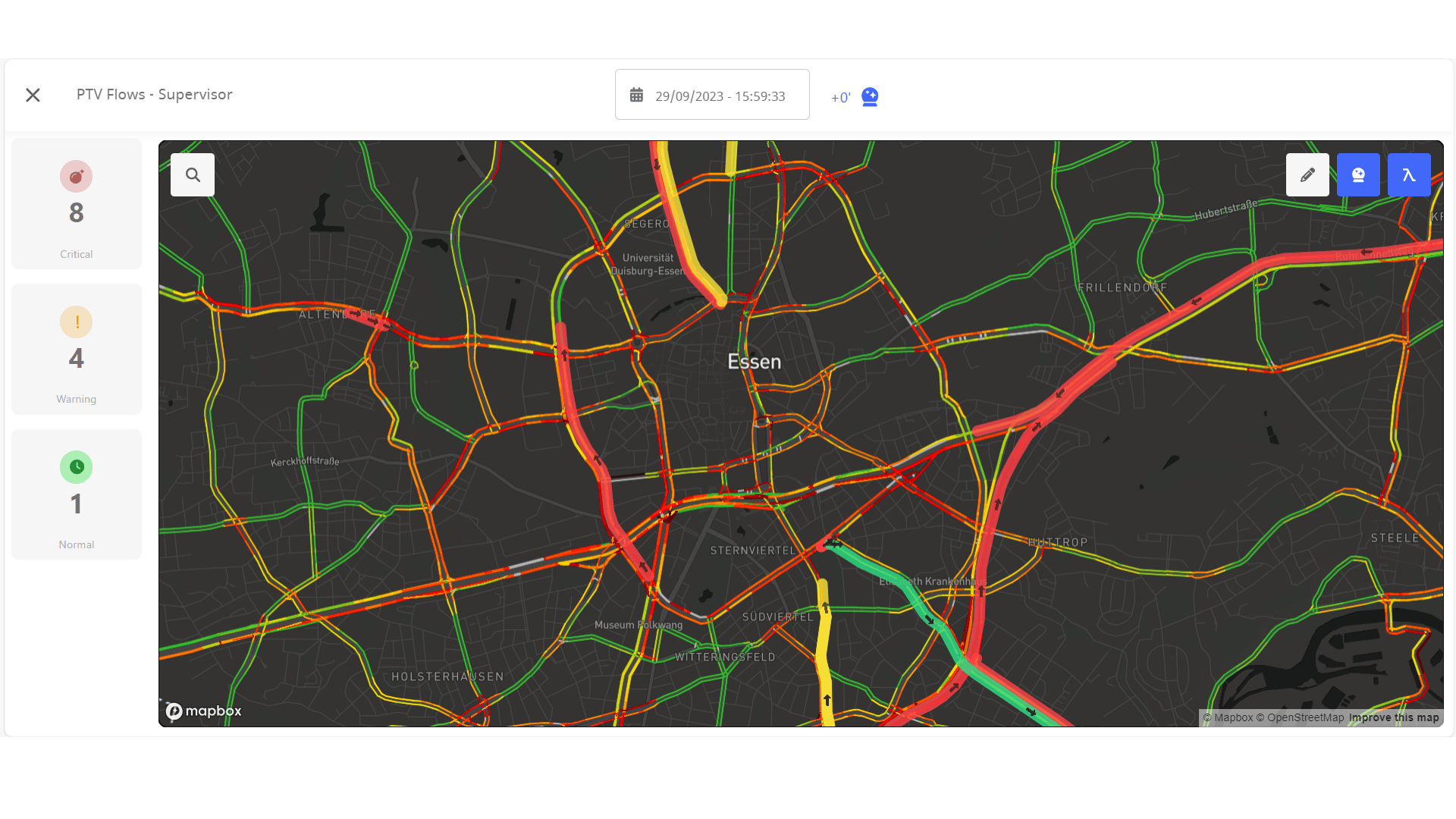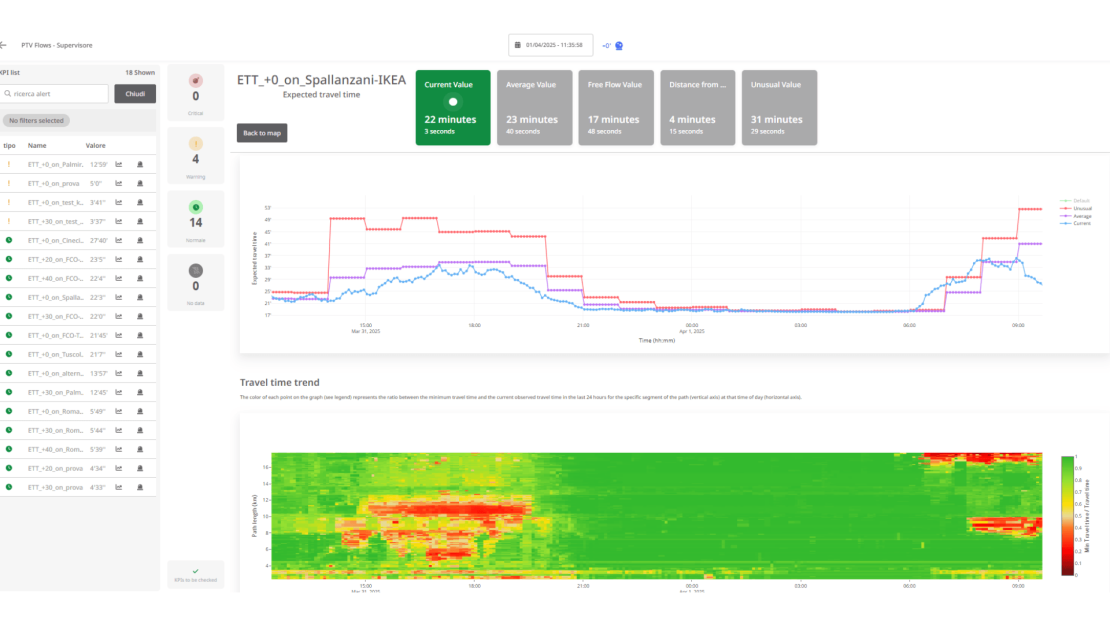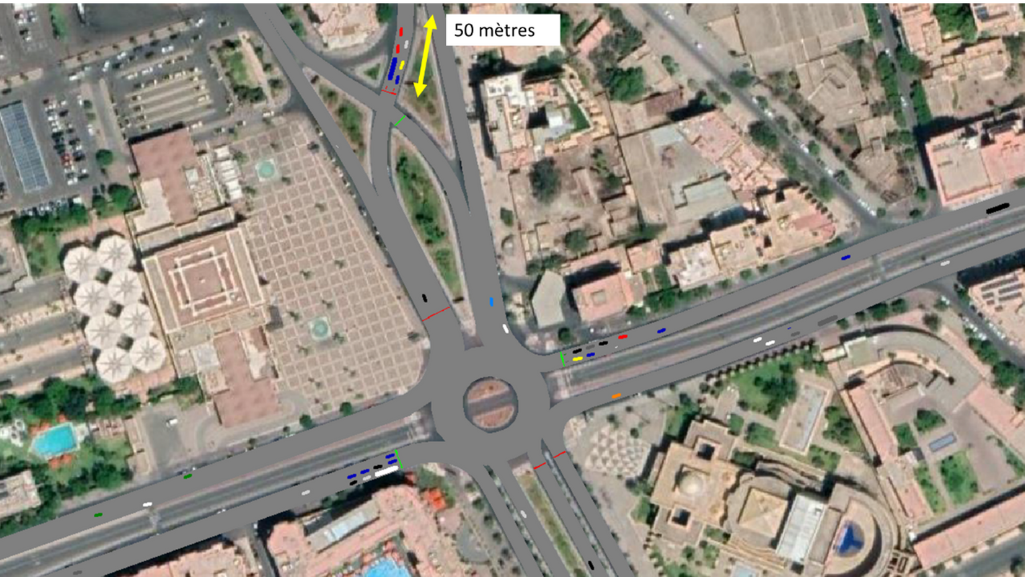Table of contents
City streets are constantly evolving. Departments of Transportation and their consulting partners are tasked with making decisions that balance mobility, safety, and sustainability – often under tight timelines and growing public scrutiny.
But one question always remains: How can we objectively measure the impact of changes to the road network?
This is where the traffic monitoring software PTV Flows comes in.
Why Before-and-After Analysis Matters
Imagine this: A city introduces a new bicycle lane by converting a car lane on a major arterial. Initial concerns from residents focus on potential gridlock. They cite isolated traffic jam incidents as proof of their concerns and are pressuring the city to reverse the changes. The traffic models and calculations that the traffic planners have prepared in advance will not change their minds. What is needed are reliable facts and figures on actual traffic volumes.
For transportation planners and modelers, that is not an imagined scenario, that is their day-to-day work. They regularly face situations that require accurate real-time data to measure actual effects, for example:

- Signal timing optimization: Did adjusting cycle times improve traffic flow, or just shift congestion downstream?
- New one-way street: Did the conversion reduce cut-through traffic while maintaining accessibility?
- Road diet for cycling infrastructure: When one lane is reallocated to bicycles, how do travel speeds and safety indicators change?
- Intersection becomes roundabout: Did the junction performance improve as predicted?
- Temporary measures: What was the impact of construction detours, special event closures, or pop-up bike lanes?
Answering these questions with evidence rather than assumptions is crucial for gaining stakeholder support and making data-driven policy decisions. This evidence base helps move the discussion away from opinions toward facts.
How PTV Flows Supports Impact Measurement

PTV Flows enables transportation experts and consultants to compare conditions before and after an intervention with precision:
- Real-time monitoring: Continuously track traffic flow, speeds, and bottlenecks as changes are implemented.
- Historical data analysis: Store and analyze KPI trends, comparing weeks or months before with the period after implementation.
- Scenario validation: Use PTV Flows as a complement to your existing transportation models – providing a real-world validation loop and real-time feedback.
As a result, planners can not only understand what happened but also communicate the value of interventions clearly to decision-makers and the public. Traditional methods of measuring impact, such as extensive traffic surveys or detection infrastructure, are often slow and costly. PTV Flows changes this by offering rapid deployment without the need for heavy infrastructure investments. The software uses Floating Car Data, allowing planners to monitor traffic conditions cost-effectively and generating insights that scale from a single corridor to an entire network.

Take the Next Step
In short, PTV Flows empowers transportation planners to move from “we think” to “we know”. If you’re curious about how PTV Flows can support your city or consulting projects, get in touch with us if you want to learn more.
Or even better: Try it for free and see for yourself.

Measure the Impact of Mobility Changes
Discover how PTV Flows works

More on Smart Mobility Solutions?
Our white paper explores how smart solutions are transforming transportation systems and helping cities prepare for a more resilient and connected future.



